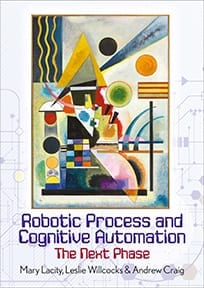Undoubtedly, the set of technologies that we call SMAC/BRAID—Social media, Mobile technologies, Analytics and Big Data, Cloud services, Blockchains, Robotics, Automation of knowledge work, the Internet-of-Things, and Digital Fabrication — is the most forceful trend changing the underlying cost, speed, and quality of business and IT services. These technologies have profound effects on the way work will be done and the composition of the workforce. In combination, they will drastically change the outsourcing landscape over the next five years beginning as each contract comes up for renewal and clients demand the shift from a traditional to more digitally-based, automated service models. Against this fast-paced backdrop of technological innovations spawned by startups and in innovation labs, lies the real-world, and much underestimated, challenges of embedding them into today’s many-siloed enterprises.
Outsourcing professionals in both client and service provider organizations increasingly need a mix of business, interpersonal and ever refreshed technical skills to fulfill the emerging tasks these technologies are bringing. While fourth generation clients tend to build the requisite distinctive in-house capabilities needed for using external service providers, we find other clients under-investing in this area. Clients must also learn to align their strategic sourcing intent with their operational behaviors.
We hear many clients say cost is just table stakes and they want more partnering and pro-active behaviors and to move to business-outcome metrics. Customers expect more embedded, transformational suppliers supporting innovation, digital technologies, analytics, social media, cloud computing and automation. These are the right goals. But, in practice, clients undercut the intent by shortening contracts, putting more weight on cost and operations than they suggest, focusing on tactical issues, are unduly being influenced by past relationships, surrender legacy practices, and IT and contract labor arbitrage more reluctantly than they think. Service providers are invariably radical in their marketing rhetoric, but often much more conservative and risk averse in their operational, day-to-day practices. To remain competitive both sets of professionals are going to need different leadership styles, different forms of contracting, new ways of teaming and working together, and much better trust-based behaviors based on aligned metrics and incentives. The move needs to be to what we have been calling collaborative innovation and this cannot be postponed much longer.

















